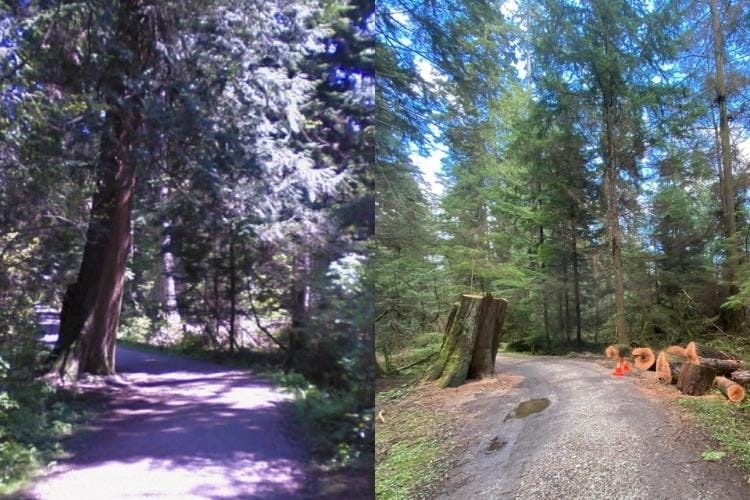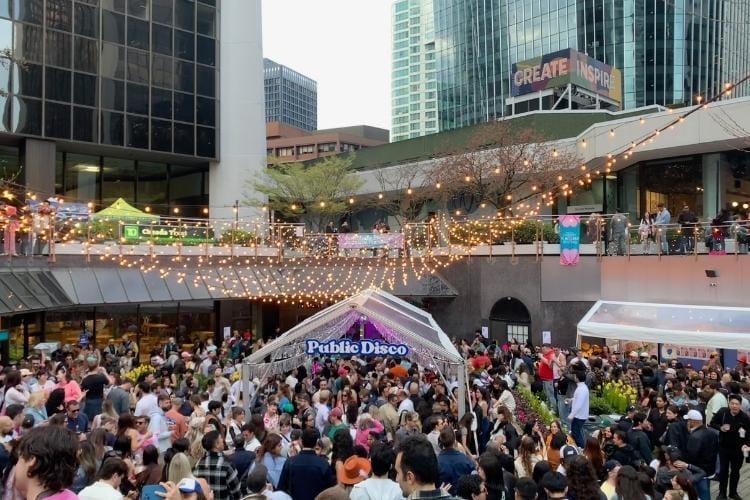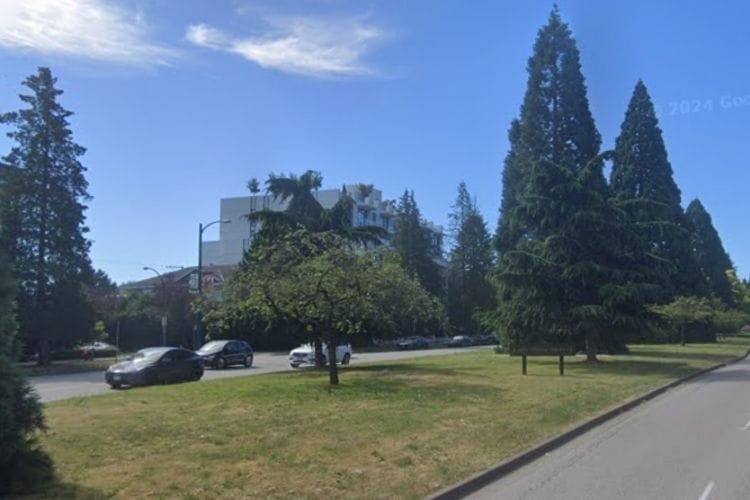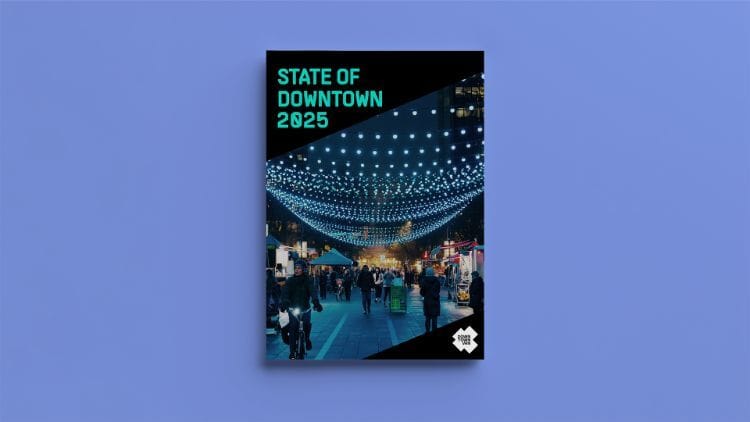- Vancity Lookout
- Posts
- Concern grows as 200+ year-old cedars cut down in Stanley Park
Concern grows as 200+ year-old cedars cut down in Stanley Park
A line has been crossed, old tree advocate, educator, and Stanley Park tour guide Colin Spratt says

Good morning,
Nate with you today. The start of this week has felt like a reset after a weekend of elections, events, and a little taste of spring.
Here at the Lookout, we’re doing a bit of spring cleaning – updating our goals and looking forward, not only with our coverage over the next few weeks and months, but how we want to continue to connect and grow with the community we’re all creating here.
It’s an invigorating time, with so much happening in Vancouver, and we’re doing our level best to stay on top of everything as much as we can. Part of that process is that sometimes stories get delayed, or take longer than we expect, while new information jumps to the top of our triage list.
Our main story today involves a latter case, as we revisit the tree removals in Stanley Park from a new perspective.
Let’s get to it.
— Nate Lewis, Vancity Lookout

PS - If you find this newsletter valuable, please consider forwarding it to your friends. New to the Lookout? Sign-up for free. If you have any tips, leads, or story ideas, you can reach out to Nate directly at [email protected]
WEATHER
Wednesday: 11 🌡️ 6 | 🌧️
Thursday: 11 🌡️ 3 | 🌧️
Friday: 8 🌡️ 3 | 🌧️
BY-ELECTION NUMBERS
📉 6.3%: The decline in average rental asking prices in Vancouver compared to a year ago. Prices are falling faster here than the Canadian average (2.8%). [CityNews]
🏚️ $43,000: The fine handed out to a Vancouver landlord, who evicted four East Van tenants and re-rented the house rather than demolishing it. [Urbanized]
💸 $6+ million: The amount of money that the Aquilini Investment Group – the billionaire owners of the Vancouver Canucks – won’t make per game in playoff ticket revenues as the Canucks are about to be eliminated from contention. [CityNews]
PARKS
Concern grows as 200+ year-old cedars cut down in Stanley Park

A more than 200-year-old living cedar that used to lean over Lees trail in Stanley Park. Photos by Colin Spratt
What happened: There’s growing concern about what sort of trees are being cut down in Stanley Park, as the park board’s multi-year project intended to mitigate the risk of falling trees and wildfires in the park continues.
What we heard: Colin Spratt, an advocate and educator who focuses on old trees in Vancouver is going public with his critiques of the process. He says the cutting down of two multi-hundred-year-old cedar trees and Canada’s largest red alder has crossed a line.
Spratt is a member of the BC Big Tree Committee and founder of Ancient Trees of Vancouver, where he offers educational resources and tours of old and significant trees in Stanley Park.
The park board prepared a statement on the removal of these trees but were not able to obtain the necessary approvals to send the statement to Vancity Lookout by publication time. The web version of this article will be updated with the park board’s statement as soon as we receive it.
Flashpoint: “It's really the final stretch of risk mitigation that they're doing with the logging that has crossed a very, very obvious line,” Colin Spratt told Vancity Lookout, referring to the last six to eight months of tree removal work as “the most aggressive.”
Spratt recently put out a press release, including photo and video evidence, detailing the removal of significant trees – like a 200 and a 400-600 year-old cedar and Canada’s largest red alder – from the park.
“There's a beautiful western red cedar that's a few hundred years old, growing at an angle over a trail that's fully alive. Why did that tree get cut down? I completely understand why the dead hemlocks got cut down right beside it, but why did that cedar get cut down?” Spratt questioned.
“I think [the park board and city would] rather just basically rid themselves of any chance of liability,” he alleged.
Background: In 2020, Stanley Park experienced a hemlock looper moth outbreak, an insect infestation which causes severe damage to trees. While outbreaks typically last only one to three years, this infestation was on the longer end of that spectrum, resulting in significant numbers of dead trees, primarily hemlocks, in the park.
Initially, 160,000 impacted trees – mostly small hemlocks – were identified for removal, due to the risk of trees falling on people or infrastructure, and a heightened risk of wildfire. That figure was first made public in a city news release in November 2023, with more detail provided in a city-commissioned assessment by forestry consultant B.A. Blackwell and Associates (Blackwell), submitted in January 2024.
In the 15 months since, the park board has significantly altered those projections, saying “only a fraction of these impacted trees will need to be removed due to their risks to public safety.”
8,350 trees were removed or treated between October 2023 and December 2024, according to the park board. At the beginning of 2025, the park board accelerated the timeline for removals, citing an increase in falling trees.
Genuine fear: Spratt – who spends a significant amount of time in Stanley Park leading tour groups and mapping old-growth trees – said he’d been closely watching all the initial logging work around high-traffic areas like the causeway, the aquarium, and Prospect Point.
“I understand this. These are thousands of dead Hemlock trees… that might fall on a car, might fall on someone. I think it'd be lovely if we could just leave it, but we have too many people in the park. I've seen hemlocks crashed down on the trails and stuff. The Hemlocks can be managed to a degree,” Spratt said.
However, it was seeing that some older, living trees near trails were being removed as well that drove Spratt to speak out about his concerns, because he thinks the calculation of risk to public safety versus preserving trees should change depending on the tree’s significance and where you are in the park.
“It's not that anyone is doing this to completely destroy the ancient forest of Stanley Park [without justification], there's fear there. We don't want someone to get harmed. I think we can all agree that that's a good thing.”
“I think the fear is genuine that some of these Hemlock trees could pose a risk… [however] that does not give the excuse of chainsaw management for an ancient tree,” Spratt said.
Ancient isn’t a technical forestry term but the word is often used for trees in the 400–800-year-old range, Spratt explained. “It’s more about giving people a sense of the tree’s history and ecological importance,” he added.
Dive deeper: The tree removals have been the subject of two lawsuits, one of which is pending, filed by the newly-formed Stanley Park Preservation Society in an effort to stop further tree cutting in the park.
Need for better balance: One forestry expert who Vancity Lookout asked to comment on Spratt’s findings said, while the park board is, overall, taking a rigorous and professional approach to managing wildfire and tree risk, he sympathizes with Spratt’s concerns.
“It appears that the efforts to mitigate wildfire and tree risk are not doing enough to balance the need to also steward and safeguard the full range of values held within the park,” Ira Sutherland told Vancity Lookout by email.
Sutherland is a registered professional forester, who earned his PhD from UBC Forestry, and is also a member of the BC Big Tree Committee.
Stanley Park “contains significant natural assets, such as those ancient trees that Colin is highlighting, which store huge amounts of carbon to mitigate global warming, filter air pollutants to improve urban air quality, and provide spiritually revitalizing places to recreate in. These natural assets and the ecosystem services they provide are very costly if not impossible (in the case of 1000 year old trees) to replace,” Sutherland said.
ESSA, an environmental management company that Sutherland works for, just released a new report that found fully protecting old-growth forests in two parts of the B.C.’s Interior could yield about $43 billion in economic benefits over the next century, according to BIV.
“This is quite different than what I think might be needed in Stanley Park, but does emphasize the high value of old-growth,” Sutherland said.
A mosaic of forest types: Spratt doesn’t take issue with the approach the park board and its contractors are taking in some younger parts of the forest, but he’s concerned they’re not altering their strategy based on the age and significance of different parts of the forest.
“We are treating the park as one entity… Stanley Park is like a mosaic missing a bunch of tiles. You have areas that were logged, areas that were destroyed by wind, areas that were destroyed by previous bug outbreaks, these areas have younger trees,” Spratt said.

Map of Stanley Park’s remaining old-growth forest with trees between 400-1,000 years old in the green areas. Map by Colin Spratt.
“Certain sections of Stanley Park can be treated the way that they've been treated [during the current tree removal work], but all these [old-growth] areas in green need a completely different approach. I think – due to that not being efficient – they are [taking] a single approach to the whole park. That is where conservationists and myself are seeing negligence,” Spratt alleged.
Over the past several years, Spratt has marked the coordinates of thousands of ancient trees and created a map of the remaining old-growth areas.
Old-growth inventory: The city and park board do officially recognize there are old-growth trees in Stanley Park, but often it’s only a passing mention without details. The city’s Urban Forestry Strategy says Stanley Park has “many old-growth Douglas-fir and western redcedar trees,” while the park board’s Stanley Park Forest Management Plan mentions “a small, remnant old growth forest stand” near Tunnel Trail and Pipeline Road.
The 2024 Blackwell Assessment, which has served as the basis for the removal work, makes no mention of old-growth trees, stands, or habitats.
Old-growth trees in coastal B.C. are defined as trees that are 250 years and older, according to the province.
Spratt said, historically, there’s no map that details all the old-growth trees in Stanley Park. Sutherland pointed to one UBC Forestry Master thesis in 2010 that did so, but he wasn’t sure if that data had been incorporated into government files.
“They seem to be omitting these trees constantly. They're sort of omitted from the discussion, and I can't help but feel that the omission is because with recognizing them comes responsibility and work,” Spratt alleged.
“The small size of Stanley Park might mean that park staff 'know the forest' and so would not need to undertake expensive inventory in order to manage it carefully. However, in a situation like this it would have been helpful,” Sutherland said.
Sutherland added that the city should be reflecting on the situation and asking themselves if they have the right tools and data to manage Stanley Park in the best way possible, pointing to Gibsons as a leading example of how to integrate natural assets in municipal planning.
“With climate-related stresses, these events [like the hemlock looper outbreak] are likely to occur with greater frequency in the future, and yet the ecosystem services such as summer heat buffering will be [in] even greater demand,” Sutherland said.
What it means: The tree cutting in Stanley Park is understandably emotional and polarizing for the public. Theories that have been floating around, like that the trees are being cut down removed to make way for condos, or cut down for massive profit, don’t currently have any basis in fact. However, there are legitimate concerns about the project’s unclear scope of work, which has shifted from 160,000 impacted trees being removed down to several thousand that pose a risk to public safety.
For a group like the Stanley Park Preservation Society, they want to see as few trees cut down as possible. For Spratt, there’s a big difference between removing dead Hemlocks in busy areas and cutting down significant old trees like the cedars and alder that were removed in the recent phases of work.
Ultimately, it’s about striking the right balance between harm mitigation and preserving significant old trees that provide immense environmental, cultural, and social value. Whether that’s being done in this case will continue to be a matter of public and professional debate.
Journalism costs money. Yes, it’s especially true here at the Lookout. Why? Because we’re almost entirely reader-funded.
That means each interview, each paragraph, each quote and insight is all funded by local Vancouver readers who believe a great city deserves great journalism, and journalists who write it all.
If you find value in our hyper-local Vancouver journalism and want to support our team of journalists in the work they do, consider becoming a member today. We cannot do this work without your support.
SPONSORED BY DOWNTOWN VAN
How do major events impact Downtown Vancouver?
Downtown Van's latest State of Downtown report revealed some surprising insights.
According to Moneris data commissioned by the organization, the Port of Vancouver’s Canada Day celebration led to a 15% surge in downtown spending while Taylor Swift’s three-day stop caused an even more impressive 26% lift.
What stands out most, though, is the lasting impact of free events like Canada Day and the Granville Block Party. These gatherings not only draw in large crowds but also create long-term effects, encouraging repeat visits and extended time spent downtown.
For a more in-depth look, check out the 2025 State of Downtown report.
THE AGENDA
🗳️ “We're going to take a really hard look at ourselves," Mayor Ken Sim said of ABC Vancouver, two days after the majority party’s candidates performed badly in Saturday’s by-election. Sim said he was proud of the party’s decision to run Ralph Kaisers and Jaime Stein as candidates, while acknowledging the results meant some Vancouverites are “not necessarily happy with everything that's going on.” [CBC]
✡️ In his concession speech, Stein, who is Jewish, said Vancouver has an antisemitism problem, referencing threats made against him on social media and vandalism to campaign signs. On Tuesday, the Jewish Federation of Greater Vancouver accused newly elected councillor Sean Orr of antisemitism regarding a 2021 social media post. Orr responded, saying the comment in question was made sarcastically to call out antisemitism. [Global, X]
🤝 ABC Coun. Lisa Dominato said the party needs to rebuild trust, and look at how they conduct business at City Hall – including how they talk to the public when coming up with policy ideas. Dominato, who hasn’t always voted with her caucus colleagues, told CBC’s Stephen Quinn she’s not worried about her differing perspectives threatening her place within ABC after Coun. Rebecca Bligh was removed from the party in February. [CBC, Vancity Lookout]
📊 NDP leader Jagmeet Singh was questioned in Vancouver on Tuesday about how the federal New Democrats can stay relevant in the upcoming election as the party sits under 10 per cent in the polls. Singh said he’s confident Canadians need the NDP, while 10-year Vancouver East MP and NDP candidate Jenny Kwan said national polls don’t reflect the good feelings on the ground in East Van. [Vancouver Sun, CBC]
🚸 The city will be piloting a new one-way traffic pattern in front of Canada Place, beginning the middle of April, in an effort to cut down on issues between vehicles and pedestrians in the tourism hub. Vehicles will be required to enter the area from Howe Street and exit via Burrard or Thurlow streets. If the pilot is successful, the one-way traffic flow may become permanent. [Global]
😲 It ultimately won’t matter, but the Canucks staged a ridiculous, all-time comeback in Dallas on Tuesday night, scoring three goals in the final minute of the game and winning in overtime. Vancouver’s official playoff odds are .2 per cent, but they’re not walking into that sweet night quite yet. [MoneyPuck]
DREAM HOME

Cute? Kind of affordable? Near commercial?
Yes, yes and yes. This 618 square foot unit is sadly only one bedroom, but if that’s what you need, then this place has it all. Similar-priced places aren’t nearly as nice, with bambooo floors, granite countertops and updated building features.
ARTS GUIDE
Performance
Theatre Under the Stars at the Malkin Bowl announced its slate of performances for this summer, with Roald Dahl’s Charlie and the Chocolate Factory (great for kids 8+) and Legally Blonde. The shows will run from Jun. 27 until Aug. 15.
The story of two murderous old women, Abby and Martha, is featured in Arsenic and Old Lace at Metro Theatre, described as full of “dark humour” and “charm”. On now until Apr. 26. [Stir]
If you’re looking for a dance show, this Saturday you can catch Dolce Memoire: Now Let’s Dance, featuring performances of the 15th and 16th century. Playing at the Vancouver Playhouse at 7:30 pm.
Art
Geoff here. I had the chance to see Riopelle: Crossroads in Time, from artist Jean Paul Riopelle a few weeks ago. The evolution of the artist is fascinating to observe, with his work spanning five decades. It’s the final stop of this series as its toured across Canada, and I can say it’s a worthwhile exhibit to experience. On until Sept. 1 at the Vancouver Art Gallery.
If you’re looking to explore photography in a different way, Stitched: Merging Photography and Textile Practices may be of interest. The photography exhibit merges photography and things like loom weaving and hand stitching, to create a three-dimensional photographic object. On until Jun. 21 at the Gordon Smith Gallery of Canadian Art.
Movies
The Motion Picture Production Code censorship guidelines changed film forever, ending more taboo films and experimentation. In VIFF’s latest series Film Studies: Hollywood Babylon, you can explore some of the biggest (and salacious) movies created before the code was brought in. Passes can be bought for $70, with five films playing until May.
The Cineplex Odeon always features some interesting films and this weekend is no different. They’re featuring movies by the late, great David Lynch with The 1984 version of Dune, Twin Peaks: Fire Walk With Me and Mulholland Dr.
The Cinematheque is featuring ongoing movies from Frederick Wiseman, maybe not known to casual filmgoers, but who the New York Times called “one of the most important and original filmmakers working today.” With nine upcoming films, you’re bound to find something to like.
PHOTO OF THE DAY

Nate Lewis photo
Crowds blossomed for Saturday’s Public Disco event downtown 🌸
VANCOUVER GUESSER

Google Maps
The Rise Up fans came through on last week’s Guesser! Congrats to the third of you who knew that was Vernon Drive.
For this week, can you tell me what street this gorgeous boulevard is on?
Is it... |
What did you think of today's newsletter? |



